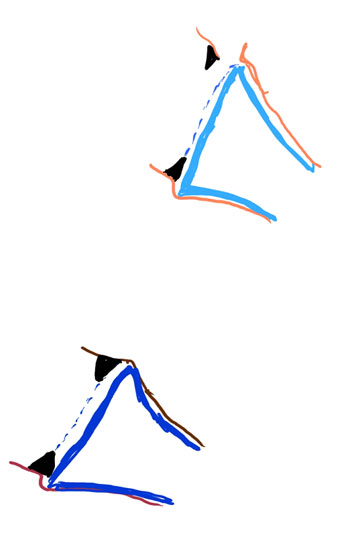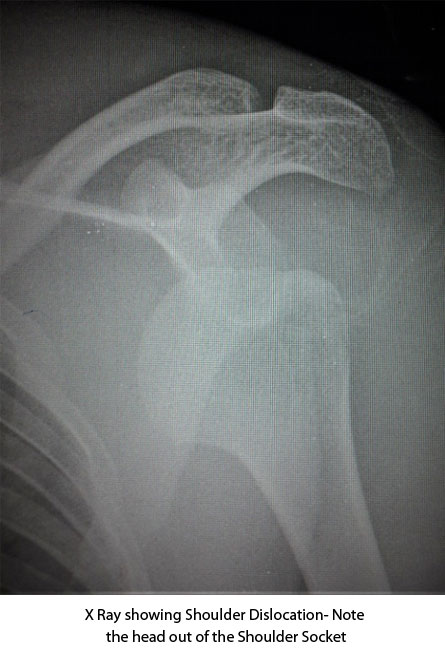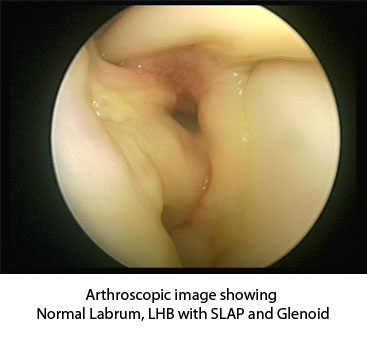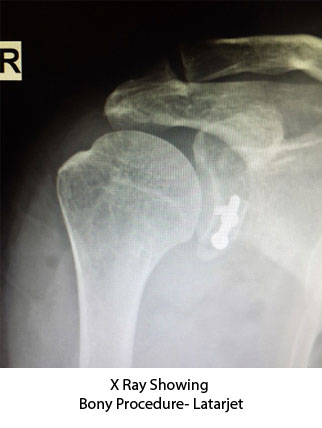

Shoulder joint is the most mobile joint of the body with 360* range of motion. This is possible as it is a ball and socket joint. The socket for this joint is shallow, with a large spherical head. The ratio of contact as any given moment is a small area of contact leading to a wide range of motion and many degrees of freedom. But this small point of contact gives the shoulder a big freedom as compared to other ball and socket joints to be lax. Now the stability of the joint is dependent on the supporting structures of the joint. These structures provide dynamic and static stability. But a joint with this much freedom comes at a cost, and this being the most commonly dislocated joint of the body.
Shoulder Joint has a capsule around the joint which thickens at places to becomes the three main ligaments of the joint. The SGHL( superior glenohumeral ligament), MGHL( Middle glenohumeral ligament), and the most important IGHL( Inferior glenohumeral ligament). These three ligaments are the main stabilizers of the joint in different range of motion. These ligaments are attached to the labrum forming a perfect braking mechanism to the overt movements of the shoulder joint. Why are we calling them brakes because as soon as the head of the humerus reaches the edge of the glenoid on the verge of almost dislocating it, the joint position receptors get activated causing the capsule and these ligaments to contract which pushes the head back into the socket. This pull back mechanism is assisted by the contraction of others structures around the shoulder joint especially the rotator cuff. These joint position receptors along with pressure sensors are found in abundance in the Labrum and the capsule.

Shoulder joint Dislocation is commonly seen while playing various types of sports. Forceful Abduction external rotation causes the humeral head to reach the glenoid edge and further violent force causes it to dislocate tearing the anterior labrum. Once the joint dislocates it is a painful condition, urgent expert intervention is required to reduce the joint back in to the joint. Most of the shoulder joints can be reduced without the need of sedation. At times if the patient is very apprehensive it may need to be reduced under general anaesthesia.
As mentioned earlier, when the shoulder dislocates it causes a Bankart lesion. Bankart tear is the tear of the anterior Labrum along with the attached inferior glenohumeral ligament. One more bony dent or a fracture is produced by the edge of the glenoid on to the head of the humerus called the Hillsach’s lesion. This dent on to the head of the humerus is deeper and wider if the head repeatedly dislocates or the head remains dislocated for long. Hence it should always be reduced urgently without loss of much time. As explained earlier violent episodes can cause fractures. Fracture dislocation is also common when the greater tuberosity of the humeral head avulses with force and remains there due to the attachment of the rotator cuff to it. Post reduction of the dislocation, the greater tuberosity is reduced in most of the cases. Sometimes due to the excessive force of dislocation it can also produce a fracture on the anterior part of the glenoid called the Bony bankart. This causes bone loss on the anterior aspect of the glenoid which reduces the arc of the total surface area of the glenoid where the humerus articulates. If the bone loss on the glenoid side is more the head easily dislocates in the day to day life activities causing severe restriction of activities. The bone loss on the glenoid can also happen because of repetitive dislocations called the attritional bone loss. Recurrent dislocation over the years causes bone loss on the glenoid with a large Hillsach’s lesion on the humerus. This condition is called Bipolar Bone loss.

Its important to seek a specialist opinion after a shoulder dislocation to understand the need of any intervention needed for a particular patient. As per literature patients, history of first time shoulder dislocation with age less than 20 years are more likely to dislocate again. Patient with age group from 20 to 40 years may dislocate again but less likely than under 20 years. Fourty years and above are less likely to again dislocate.
Shoulder Arthroscopy involves anatomical repair of the structures torn at the time of dislocation to restore normal kinematics of the shoulder joint. Arthroscopy of the shoulder with history of dislocation involves repair of the labrum and the capsule with the Inferior Gleno-humeral ligament (IGHL). This tightens the loose capsule and the labrum to the edge of the glenoid which restores the balance mechanism of the shoulder joint. As explained earlier this restores the braking mechanism of the joint leading to relief from the dislocations. Arthroscopy is a quick remedy for such cases with limited bone loss on the glenoid side. Recently another arthroscopic procedure is more and more being done for a large Hillsach’s lesion called the Remplissage. Remplissage is a French word which means to fill in. Remplissage is a Arthroscopic procedure done for a large Hillsach’s lesion along with Bankart repair to further avoid dislocation in cases with a wide deep Hillsachs.

When the bone loss on the anterior glenoid is more than 25% , the chances of redislocation with only arthroscopic Bankart repair increases sharpely. Hence for such patient bony procedures like the Latarjet is appropriate to address the bone loss and give the best chances of recovery. Latarjet is a open procedure where in the corocoid along with the attached muscle is transferred to the anterior glenoid and fixed with the screws. This procedure gives the best chances in such scenario.
